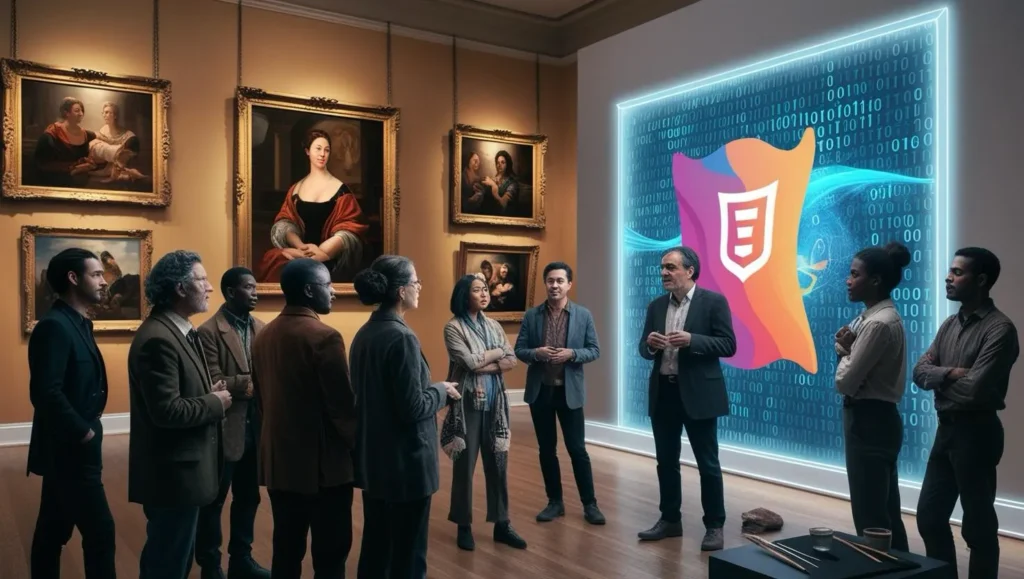The monetization of digital art is deeply linked to digital colonialism, reflecting the dynamics of data exploitation, the imposition of Western cultural values, and technological hegemony. While technology promises democratization and creative opportunities, it often reinforces historical inequalities, transforming the digital space into an extension of colonial and capitalist practices.
Data Exploitation and Surveillance Capitalism
Data extraction is a central feature of digital colonialism, often carried out without users’ explicit consent. Similar to the appropriation of natural resources during historical colonialism, personal data now serve as the raw material of this new regime. Corporations such as Google, Amazon, Facebook, Apple, and Microsoft (GAFAM) play a central role, converting personal information into economic value and using it to predict and manipulate behaviors. Digital art is directly impacted by this dynamic. Markets such as NFTs (non-fungible tokens) transform digital artworks into financial assets within ecosystems dominated by powerful corporations. While these platforms promise creative freedom, they often replicate the same surveillance practices and power concentration characteristic of digital colonialism.
Imposition of Cultural Values and Technological Hegemony
The dominance of Western multinational corporations shapes the cultural values embedded in digital art. Platforms that favor Western narratives and aesthetics contribute to the marginalization of artistic traditions from other cultures. This “digital universalism” imposes Western values as the standard, creating a space where cultural diversity is often suppressed. Moreover, less developed nations often depend on digital infrastructures designed to serve the interests of advanced countries, consolidating both cultural and economic domination.
Crisis of Cultural Value and Cultural Appropriation
Digital representation poses challenges to cultural authenticity and meaning. Digital artworks are frequently commodified, aligning with market logics that prioritize profit over cultural significance. This commodification leads to a crisis of cultural value, where local artistic traditions are often diluted to meet global market demands. Cultural appropriation further exacerbates these dynamics, as creators from dominant cultures exploit elements of marginalized cultures without acknowledgment or respect, reinforcing dynamics of exploitation and symbolic erasure.
Resistance and Decolonization Efforts
Despite these challenges, movements to resist digital colonialism and foster more inclusive artistic practices have emerged. The concept of “digital disruption” encourages collaborations between peripheral nations to develop practices that respect local contexts and challenge the technological dominance of the Global North. Artists are also reappropriating colonial archives, using digital tools to reimagine historical narratives and contest power structures. Education and critical digital literacy play a crucial role in challenging the neutrality of platforms and raising awareness of digital colonialism’s implications in art. The post-digital movement further questions the omnipresence of digital technology, proposing alternatives that prioritize human and cultural needs over purely technological advancements.
Conclusion
The dynamics of digital colonialism deeply shape the monetization of digital art. Whether through data extraction, the imposition of Western cultural values, or technological dominance, current practices often reinforce historical inequalities. However, resistance efforts from artists, academics, and communities offer hope for a more inclusive, equitable, and decolonized digital art ecosystem.
Victor T. Murari
Art History, Education & Artificial Intelligence | PhD | Advancing Educational and Cultural Narratives through AI Integration

